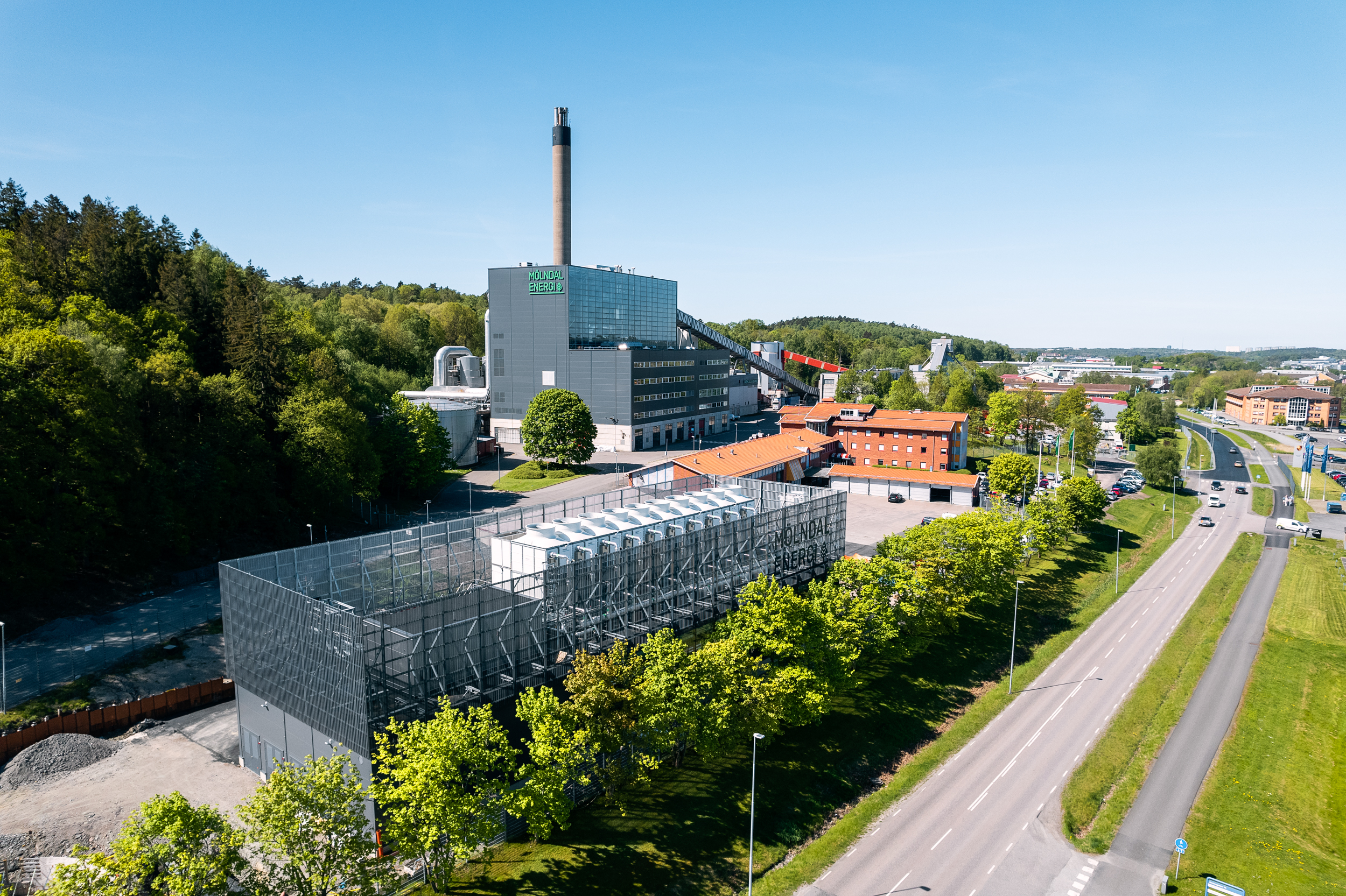District cooling boom in Mölndal, Sweden – new Thermal Energy Storage to be built

Mölndal Energi has built a new district cooling plant, trebling cooling production. The next step is a new Thermal Energy Storage (TES) tank adding another 6 MW of capacity. FVB has been responsible for the process design and coordination of commissioning the District Cooling Plant, as well as the design of the TES. FVB also proposed an innovative solution to optimise the TES tank.
A large part of the demand for district cooling comes from a new innovation cluster within Life Science. Mölndal Energi will also supply district cooling to the new suburb of Forsåker.
“Because we already had several new big customers signed on, we felt able to justify the investment needed here,” says Mats Andersson, Head of the Project and Development Department at Mölndal Energi.
Growing demand for district cooling meant that Mölndal Energi decided to invest in a new district cooling plant in 2021. The energy company already had a 3 MW cooling plant called Berget, located in the centre of Mölndal in an old rock chamber that used to house oil-fired boilers originally used for district heating production.
The new district cooling plant stands in the same area as Mölndal Energi’s CHP plant. Cooling is produced through a combination of absorption cooling, free cooling and compressor cooling. Absorption cooling uses summertime surplus heat from waste incineration and industry in the Gothenburg area. The new district cooling plant, completed in the spring of 2024, is connected to Berget, making it possible to run the grid from two locations.
FVB has been responsible for the process design and coordination of commissioning the District Cooling Plant.
“All-in-all, this is a big project involving a totally new basic infrastructure project for us. We are not a big company and do not have all the skills needed for such an expansion in-house. That's why we brought in expert help and key skills,” explains Mats Andersson before continuing:
“FVB were responsible for process design and function descriptions. They were also involved in commissioning and helping us to fine-tune the plant, which was very important to us.”
In addition to the new district cooling plant, Mölndal Energi will also build a 6000 cubic meter TES tank. The tendering procedure is currently in progress and building is scheduled to start in the early autumn, with commissioning scheduled for 2026. FVB is designing the TES tank, has full functional responsibility and will guarantee the accumulator’s performance.
FVB has run advanced CFD calculations (Computational Fluid Dynamics) for the district cooling TES to simulate how the cold and warm water would move and stratify in the tank. The objective is to optimise the design and operation to retain dynamic stratification, which gives efficient cold-water storage.
“Using the simulations, we found a completely new solution and unique design of the nozzles in the district cooling TES used to control and restrict the flow of water at the inlet to the tank,” explains Bernt Andersson, Project Manager for FVB.
“They are optimised to manage the flow needed and to minimise stratification in a completely new way, giving Mölndal Energi a highly optimised TES tank for its district cooling,” concludes Andersson.
More information:
Bernt Andersson, +46 (0) 21-81 80 60


